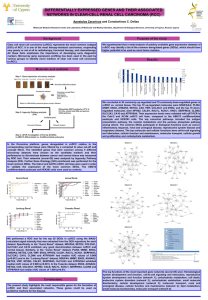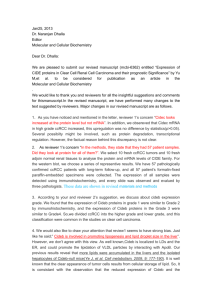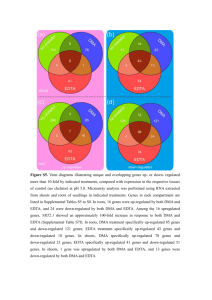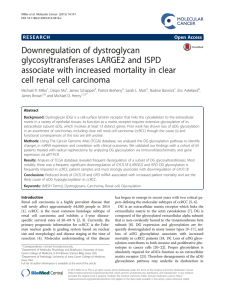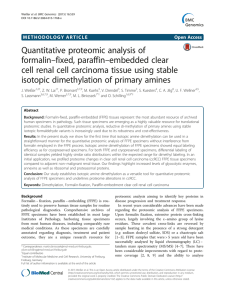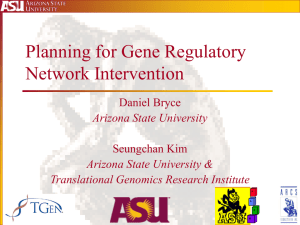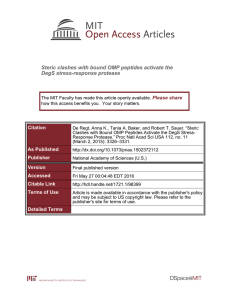Παρουσίαση του PowerPoint
advertisement
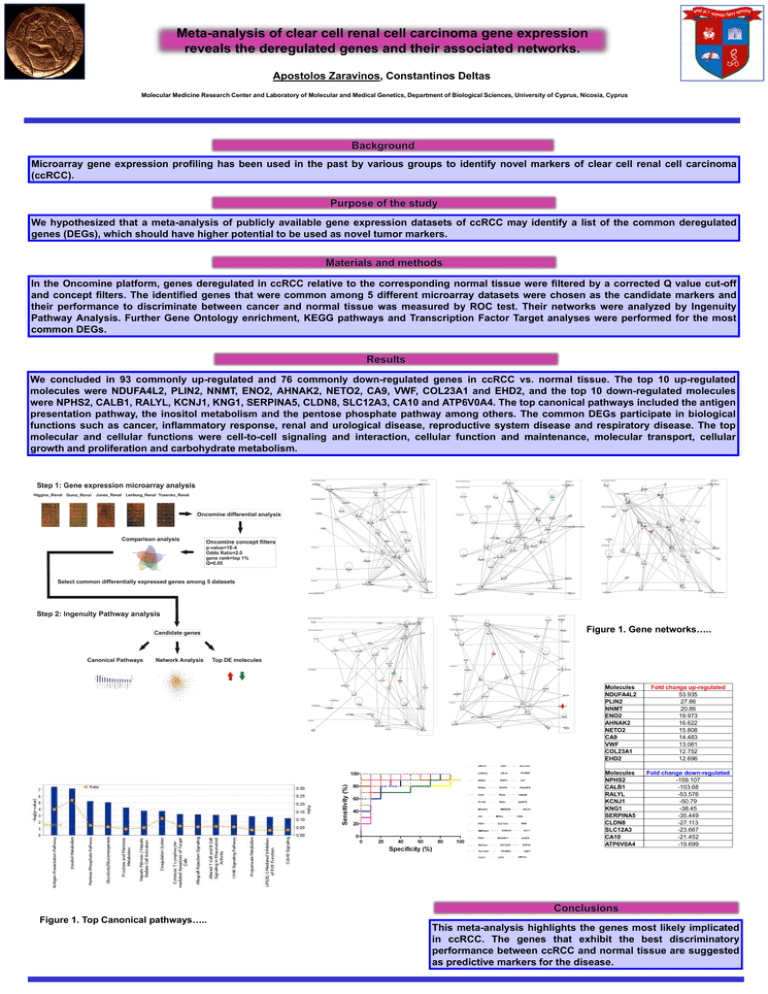
Meta-analysis of clear cell renal cell carcinoma gene expression reveals the deregulated genes and their associated networks. Apostolos Zaravinos, Constantinos Deltas Molecular Medicine Research Center and Laboratory of Molecular and Medical Genetics, Department of Biological Sciences, University of Cyprus, Nicosia, Cyprus Microarray gene expression profiling has been used in the past by various groups to identify novel markers of clear cell renal cell carcinoma (ccRCC). We hypothesized that a meta-analysis of publicly available gene expression datasets of ccRCC may identify a list of the common deregulated genes (DEGs), which should have higher potential to be used as novel tumor markers. In the Oncomine platform, genes deregulated in ccRCC relative to the corresponding normal tissue were filtered by a corrected Q and concept filters. The identified genes that were common among 5 different microarray datasets were chosen as the candidate their performance to discriminate between cancer and normal tissue was measured by ROC test. Their networks were analyzed Pathway Analysis. Further Gene Ontology enrichment, KEGG pathways and Transcription Factor Target analyses were performed common DEGs. value cut-off markers and by Ingenuity for the most We concluded in 93 commonly up-regulated and 76 commonly down-regulated genes in ccRCC vs. normal tissue. The top 10 up-regulated molecules were NDUFA4L2, PLIN2, NNMT, ENO2, AHNAK2, NETO2, CA9, VWF, COL23A1 and EHD2, and the top 10 down-regulated molecules were NPHS2, CALB1, RALYL, KCNJ1, KNG1, SERPINA5, CLDN8, SLC12A3, CA10 and ATP6V0A4. The top canonical pathways included the antigen presentation pathway, the inositol metabolism and the pentose phosphate pathway among others. The common DEGs participate in biological functions such as cancer, inflammatory response, renal and urological disease, reproductive system disease and respiratory disease. The top molecular and cellular functions were cell-to-cell signaling and interaction, cellular function and maintenance, molecular transport, cellular growth and proliferation and carbohydrate metabolism. Figure 1. Gene networks….. Figure 1. Top Canonical pathways….. Molecules NDUFA4L2 PLIN2 NNMT ENO2 AHNAK2 NETO2 CA9 VWF COL23A1 EHD2 Fold change up-regulated 53.935 27.86 20.86 19.973 16.622 15.808 14.483 13.061 12.752 12.696 Molecules NPHS2 CALB1 RALYL KCNJ1 KNG1 SERPINA5 CLDN8 SLC12A3 CA10 ATP6V0A4 Fold change down-regulated -159.107 -103.68 -53.576 -50.79 -38.45 -35.449 -27.113 -23.667 -21.452 -19.699 This meta-analysis highlights the genes most likely implicated in ccRCC. The genes that exhibit the best discriminatory performance between ccRCC and normal tissue are suggested as predictive markers for the disease.
